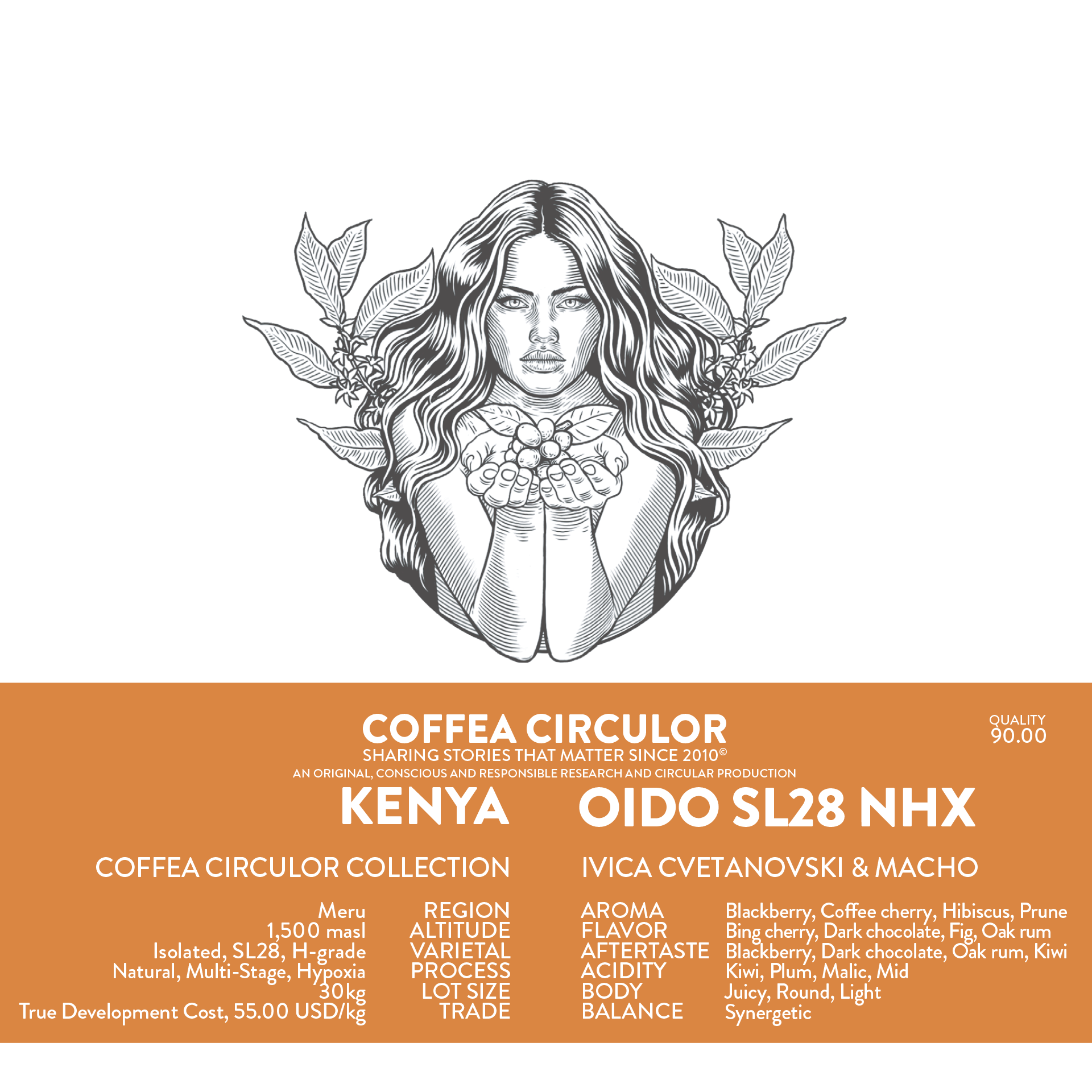



KENYA Coffea Circulor Oido Isolated SL28 Natural Multi-Stage Hypoxia NHX
Roasting on demand.
Worldwide shipping. Exceptions might apply.
"An original, conscious and responsible research and circular production. Exclusively researched, grown, harvested, sorted, fermented, dried, transported, roasted and distributed by Coffea Circulor. Sustained by internal funding by utilizing our True Development Cost-initiative rendering a unique, fully accountable and complete production cycle. Transparency in all sub-production phases - as we originally envisioned it in early 2000 - an authentic reality."
- Coffea Circulor Kenya Estate (Ivica & Macho)
Summary of producer
Coffea Circulor Kenya Estate (Ivica & Macho)

Genesis
| Producer | Coffea Circulor Kenya Estate (Ivica & Macho) |
| Country | Kenya |
| Region | Meru |
| Altitude | 1,500 masl |
| Varietal | Isolated, Batian, H-grade |
| Process | Natural |
| Lot size | 30kg |
| Trade | 12.00 USD/kg (CEP)*. 55 USD/kg (TDC)** |
| Production | 2024 |
| History | Since 2005 |
Sensory
| Aroma | Blackberry, Coffee cherry |
| Flavor | Bing cherry, Fig, Lavender |
| Aftertaste | Blackberry, Dark chocolate, Mid intensity |
| Acidity | Kiwi, Plum, Malic, Mid intensity |
| Body | Juicy, Light |
| Balance | Synergetic |
| Spectra | Red, Orange, Purple |
| Evaluation | Hario V60, Ceramic, VCF-01 filter, WBrC One (1:1:1) |
| Quality | 90.00 |
| Style | Modern |
Made by Kenya
Finished in Scandinavia
Finished and shipped from Sweden with standard or express shipment worldwide. Learn more about production cut-offs and shipping here
The price for your shipment is calculated and added to your total during checkout.
Only whole beans are produced and shipped.
Merchandise such as apparel might be shipped separately depending on production. However we do our best to accommodate one time shipment.
We ship to most countries in the world. Exceptions might apply.
Kindly see our terms and conditions, shipping policy.





